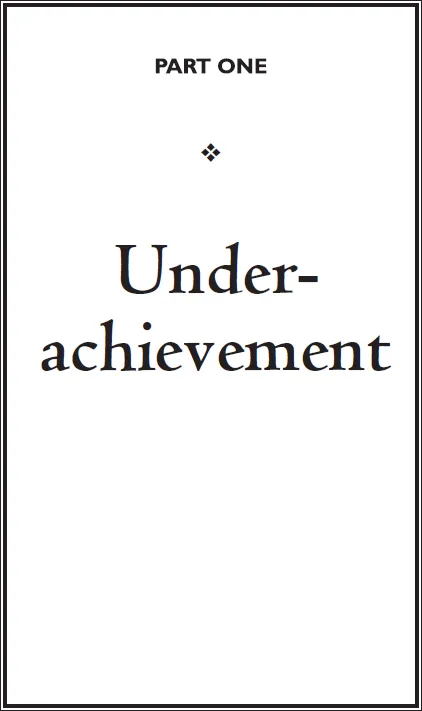![]()
![]()
Only one person thought Kathryn was the right choice to become CEO of DecisionTech, Inc. Luckily for her, that person was the Chairman of the board.
And so, less than a month after the previous chief executive had been removed, Kathryn Petersen took the reins of a company that just two years earlier had been one of the most talked-about, well-funded, and promising start-up companies in the recent history of the Silicon Valley. She could not have known just how far from grace the company had fallen in such a short period of time, and what the next few months had in store for her.
![]()
![]()
DecisionTech was located in Half Moon Bay, a foggy, coastal farming town just over the hills from the San Francisco Bay. It was not technically part of the Silicon Valley, but the Valley is not so much a geographical entity as a cultural one. And DecisionTech certainly fit within that world.
It had the most experienced—and expensive—executive team imaginable, a seemingly indestructible business plan, and more top-tier investors than any young company could hope for. Even the most cautious venture firms were lining up to invest, and talented engineers were submitting their resumés before the company had leased an office.
But that was almost two years earlier, which is a lifetime for a technology start-up. After its first few euphoric months of existence, the company began experiencing a series of ongoing disappointments. Critical deadlines started to slip. A few key employees below the executive level unexpectedly left the company. Morale deteriorated gradually. All of this in spite of the considerable advantages that DecisionTech had amassed for itself.
On the two-year anniversary of the firm's founding, the board unanimously agreed to “ask” Jeff Shanley, the company's thirty-seven-year-old CEO and cofounder, to step down. He was offered the job of heading business development, and to the surprise of his colleagues, he accepted the demotion, not wanting to walk away from a potentially huge payout should the company eventually go public. And even in the difficult economic climate of the Valley, the company had every reason to go public.
None of DecisionTech's 150 employees were shocked by Jeff's removal. While most of them seemed to like him well enough personally, they couldn't deny that under his leadership the atmosphere within the company had become increasingly troubling. Backstabbing among the executives had become an art. There was no sense of unity or camaraderie on the team, which translated into a muted level of commitment. Everything seemed to take too long to get done, and even then it never felt right.
Some boards might have been more patient with a stumbling executive team. DecisionTech's was not. There was just too much at stake—and too high a profile—to watch the company waste away because of politics. DecisionTech had already developed a reputation within the Valley for being one of the most political and unpleasant places to work, and the board couldn't tolerate that kind of press, especially when the future had looked so promising just a couple of years earlier.
Someone had to be accountable for the mess, and Jeff was the man at the top. Everyone seemed relieved when the board announced the decision to remove him.
Until three weeks later, when Kathryn was hired.
![]()
The executives couldn't agree on which of Kathryn's features presented the biggest problem. There were so many.
First, she was old. Ancient, at least by Silicon Valley standards. Kathryn was fifty-seven.
More important, she had no real high-tech experience other than serving as a board member of Trinity Systems, a large technology company in San Francisco. Most of her career had been spent in operational roles with decidedly low-tech companies, the most notable of which was an automobile manufacturer.
But more than her age or experience, Kathryn just didn't seem to fit the DecisionTech culture.
She had started her career in the military, then married a teacher and basketball coach at a local high school. After raising three boys, she taught seventh grade for a few years until she discovered her affinity for business.
At the age of thirty-seven, Kathryn enrolled in a three-year business school night program, which she completed a semester early at Cal State Hayward, which was not exactly Harvard or Stanford. She then spent the next fifteen years in and around manufacturing, until her retirement at the age of fifty-four.
The fact that Kathryn was a woman was never an issue for the executive team; two of them were women themselves. With much of their collective experience coming from the somewhat progressive world of high tech, most had worked for women at some time during their careers. But even if her gender had been a problem for anyone on the team, it would have been dwarfed by her glaring cultural mismatch.
There was just no mistaking the fact that, on paper, Kathryn was an old school, blue-collarish executive. That presented a stark contrast to the DecisionTech executives and middle managers, most of whom had little experience working outside of the Valley. Some of them even liked to brag that they hadn't worn a suit—outside of a wedding—since graduating from college.
It was no surprise that after first reading her resumé, board members questioned the Chairman's sanity when he suggested they hire Kathryn. But he eventually wore them down.
For one, the board believed their Chairman when he flat out assured them that Kathryn would succeed. Second, he had been known to have extremely good instincts about people, notwithstanding the problem with Jeff. He certainly wouldn't make two mistakes in a row, they reasoned.
But perhaps most important of all (though no one would admit it), DecisionTech was in a desperate situation. The Chairman insisted that there weren't too many capable executives willing to take on such a messy job given the current state of affairs at the scarred company. “We should consider ourselves lucky to have such a capable leader as Kathryn available,” he successfully argued.
Whether or not that was true, the Chairman was determined to hire someone he knew and could trust. When he called Kathryn to tell her about the job, he certainly could not have known that he would be regretting the decision just a few weeks later.
![]()
No one was more surprised about the offer than Kathryn. Although she had known the Chairman for many years on a personal level (Kathryn had actually first met him when her husband coached his oldest son in high school), she could not have imagined that he thought so highly of her as an executive.
Most of their relationship had been social, centering around family, school, and local athletics. Kathryn assumed that the Chairman had little idea about her life outside her role as a mother and coach's wife.
In fact, the Chairman had followed Kathryn's career with interest over the years, amazed at how successful she had become with such relatively modest training. In less than five years, she had become chief operating officer of the Bay Area's only automobile manufacturing plant, a U.S. Japanese joint venture. She held that job for the better part of a decade and made the plant one of the most successful cooperative enterprises in the country. And while the Chairman knew little about the car industry, he knew one thing about Kathryn that convinced him she was perfect to fix the problems at DecisionTech.
She had an amazing gift for building teams.
![]()
If the executives at DecisionTech had any doubts about Kathryn when her hiring was first announced—and they did—they were even more concerned after their new leader's first two weeks on the job.
It wasn't that Kathryn did anything controversial or misplaced. It was that she did almost nothing at all.
Aside from a brief reception on her first day and subsequent interviews with each of her direct reports, Kathryn spent almost all of her time walking the halls, chatting with staff members, and silently observing as many meetings as she could find time to attend. And perhaps most controversial of all, she actually asked Jeff Shanley to continue leading the weekly executive staff meetings, where she just listened and took notes.
The only real action that Kathryn took during those first weeks was to announce a series of two-day executive retreats in the Napa Valley to be held over the course of the next few months. As though she needed to give them any more ammunition, none of her reports could believe she had the gall to take them out of the office for so many days when there was so much real work to be done.
And to make matters worse, when someone suggested a specific topic for discussion during the first retreat, Kathryn refused. She had her own agenda already set.
Even the Chairman was surprised, and a bit unnerved, about the report...


